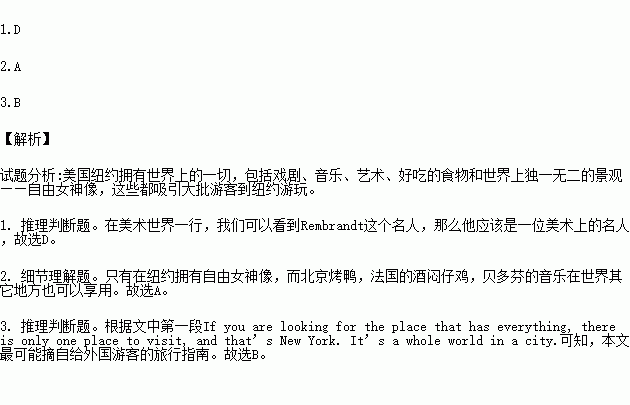题目内容
If you are looking for the place that has everything, there is only one place to visit, and that’s New York. It’s a whole world in a city.
The World of Theatre: All of New York is a stage. And it begins with Broadway. Where else can you find so many hit shows in one place? Only in New York!
The World of Music: Spend an evening with Beethoven at Lincoln Centre. Swing to the great jazz of Greenwich Village. Or rock yourself silly at the hottest dance sports found anywhere.
The World of Art: From Rembrandt to Picasso. From Egyptian tombs to Indian teepees. Whatever kind of art you like, you will find it in New York.
The World of Fine Dining: Whether it’s Roast Beijing Duck in Chinatown, or the finest French coq au vin found everywhere, there is a world of great taste waiting for you in New York.
The World of Sights: What other city has a Statue(雕塑) of Liberty? A Rockefeller Centre? Or a Bronx Zoo? Where else can you take a horse-drawn carriage(马车) through Central Park?Only in New York!
1.From the text we know that “Rembrandt” is mostly likely to be the name of a famous ________.
A. actorB. musicianC. cookD. painter
2.Which of the following can visitors do only in New York?
A. To see the Statue of Liberty
B. To taste the finest French coq au vin
C. To enjoy a Beethoven concert
D. To eat Roast Beijing Duck
3.This passage may be taken from ________.
A. a handbook for English learners
B. a guidebook for foreign travelers
C. a pocketbook for businessmen
D. a storybook for local readers

